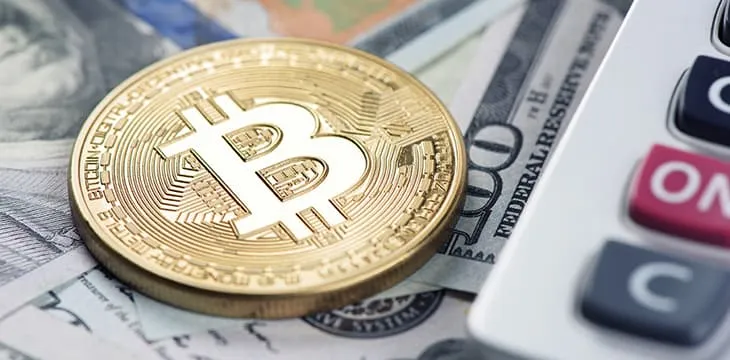|
Getting your Trinity Audio player ready...
|
“To me, individual freedom is one of the most critically important aspects of human existence. I don’t believe you can truly grow as an individual if you’re not free to act.”
“I also have a duty-based philosophy. I don’t believe that you can actually have a working society without some sort of duty and obligation. Rights require duty”.
“As much as I would love to see a completely free world, Bitcoin allows you not to be free.”
– Dr. Craig Wright
These powerful statements above are revealed in the fourth video of Ryan X. Charles’s “Theory of Bitcoin: The Bitcoin Whitepaper” with Dr. Craig Wright. For Bitcoin to achieve global adoption, we don’t need to agree with Dr. Wright’s philosophies on individual freedom and duty. We can build other systems on top of Bitcoin that add in constraints and keep some things private, more examples of how Bitcoin is a boundless system that anyone can use.
Video four of this series covers the second section of the whitepaper which is dedicated to Bitcoin transactions. The key takeaways include everything from Dr. Wright’s overarching philosophies to traceability, verification, automation, preventing double spends and the impact of criminality in crypto. Come with me as we take a deeper dive into each of these points and learn more about the Theory of Bitcoin.
Bitcoin is not anonymous
Despite what you might have been led to believe, Bitcoin is not anonymous. Every single individual transaction is recorded and there are links between everyone who is exchanging. Looking back in history, transactions were recorded on a piece of paper and people would keep passing the paper around—one person signs to the next person, that person signs to the next person and so on. With Bitcoin, transactions follow the same concept.
In Bitcoin, the process is not anonymous because there are digital signatures involved and therefore some sort of identity attached to each transaction, either a person or a machine. It’s a system with public keys that can be validated and verified and the chain of digital signatures are the audit trail.
Anonymous cryptocurrencies can be used for crime, Bitcoin cannot. This is an important point for regulators to understand in particular, especially as criminal activity surrounding the digital currency space has inevitably tarnished Bitcoin’s reputation, a subject we’ll talk more on later.
The recipient can verify the transaction
The person who receives a transaction can verify the payment (as opposed to a node or miner), a feature that is only possible because of cryptographic algorithms and subsets. This feature allows for IP to IP exchange and links to the concept of SPV (simplified payment verification), enabling clients such as Bitcoin wallets to quickly verify that a transaction has been made and accepted by the network. Both the signing and the verifying are done by the users who are sending the transactions around.
Dr. Wright points out several times that these features were included in the original Bitcoin code, but Core (BTC) developers removed them and subsequently went a totally different direction.
Self-verification vs central authority
When we transact using fiat, we’re always depending on a central authority to verify the transaction and this costs money and leaves room for fraud. Bitcoin was specifically designed to remove the need for a central authority by self-verification.
“This is really all about automation. You don’t want to have some third party checking or adding overheads. So by allowing the system to self-verify, the miners, the nodes, verify by competition. They try to catch each other out of sync. Then you have a system where you no longer have to worry about all these extra layers because the system just incorporates that,” Dr. Wright explained.
Double spends & ‘first seen’ rule
Double spends were historically the big problem with digital currencies. Double spends are not an issue If you have a piece of paper to sign and pass around for transactions as we did in the old days. In this manner, each signature is done once and its obvious if the piece of paper is a photocopy of the original. When we’re talking digital, the problem is that you can make numerous copies of a digital item and they all look the same—Bitcoin solves this problem with the “first seen” rule.
So who needs to agree on the order of transactions received? The consensus mechanism is managed by the nodes (miners) yet anyone can audit the activity and this capability is what keeps the miners honest. Anyone can view what’s going on within the blockchain and if something suspicious is spotted, it can be taken to the courts and the miners are well aware of this.
In order for a payee to be confident the funds they are about to receive are not being double spent, the simple method is to broadcast the transaction to the network of miners. This can be a paid service for priority, or unpaid if the payee is willing to wait a minute or two.
‘Cryptocurrencies’ have a criminal past
Since its inception, Bitcoin has drawn in plenty of people who are ill-intentioned. Why is this? Dr. Wright pointed out that honest innovators were drawn in at first, but things quickly deteriorated towards the second half of 2010. He went on to explain that in the 90s, digital currencies were hot and surrounded by anarchists. After 2003, a lot of people were burned and lost money and therefore “cryptocurrencies” were considered a no-go area for a while. There was an opportunity, however, to create something in a legal way that was regulatory compliant under the rule of law.
Despite Bitcoin being created with intentions to operate within the law, there is a lot of crime happening right now in the wider digital currency world and as a result, Bitcoin is associated with crime.
Dr. Craig Wright confirmed he is in favor of a legal and compliant Bitcoin and decided to get involved again in 2015/2016 because he saw Bitcoin going down the wrong path. He’s been very vocal as of late with the law and it’s the only path he sees to saving Bitcoin when the crypto criminals are eventually taken down.
“This is part of the push to get law enforcement and others to understand. Not that they can seize Bitcoin by getting your keys, but they can seize Bitcoin full stop. When they start to understand that once they get a court order they can enforce seizures, freezing and then seizing of Bitcoin. That’s going to change the narrative very quickly,” Dr. Wright said.

 09-18-2025
09-18-2025 





